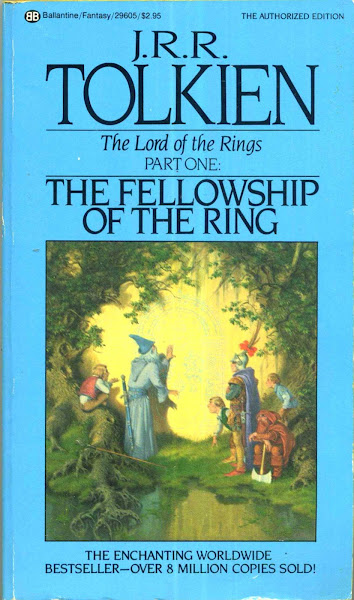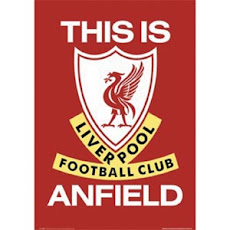I wanted to submit this in one of the sites I write for but it just too long. And I didn't want it chopped up or even edited for its message. I wanted it out there in its entire length.
Debunking myths on the presence of foreign players in the UAAP
Debunking myths on the presence of foreign players in the UAAP
by rick olivares
I just heard from a couple of UAAP Board Members that
they are leaning towards limiting slots of foreign athletes to one per team.
That topic will be tabled for discussion by the season’s end.
I applaud the league from the departure from their
initial thoughts of a blanket ban on foreign athletes to a more sensible stand.
Nevertheless, that begs the question: where exactly
do they stand with regards to these foreign athletes?
First and foremost before we dissect that, let it be
known that this is once more a basketball issue (most especially the influx of African student-athletes) that has affected every other
sport. With the arms race for a basketball championship escalating, teams will
not stop at putting up a super team.
Let’s tackle the so-called arguments for the removal
or ban on foreign players.
Argument #1 They take away slots from local players.
Argument
debunker: In a UAAP basketball team
there are 16 slots. In a UAAP football team there are 18. You mean to say that
one or two foreign players of take away slots? For as long as there have been
athletic teams, there are players who get cut for various reasons: he wasn’t
that good, he wasn’t the favorite, or he had poor grades.
Any player recruited is deemed to be important to the
cause of winning a championship. Not every player – foreign or local – develops
immediately. Some take years before their game finally matures and they become
of any use. If the foreign player were said to be the “meal ticket” then since
2008 when this current wave of African players finally reached the UAAP shores,
why has there only been one team to win a title with an African?
In Season 77, four teams listed foreigners on their
squad – NU, FEU, UE, and UST. La Salle, Ateneo, Adamson, and UP didn’t field
any foreign players.
Of the Final Four squads, two were without
reinforcements. That they did not make it isn’t entirely because the opponents
made massive use of their foreign players. You will be hard pressed to find
that argument in the La Salle-FEU series.
Ateneo’s loss boiled down to execution and the fact
that they really lacked the ceiling to begin with.
According to Imperium Technology, the outfit that
tracks stats in UAAP competition, in the category of the “Top 20 Players Who
Played the Most Minutes,” only one is a foreigner.
Top 20 Minutes Played
1.
Ravena,
Kiefer (ADMU) - 35.20
2.
Vosotros,
Almond (DLSU) - 32.76
3.
Gallarza,
Rey (UP) - 32.70
4.
Teng,
Jeron (DLSU) - 31.36
5.
Rios,
Jansen (ADU) - 31.24
6.
Newsome,
Chris (ADMU) - 30.78
7.
Elorde,
Nico (ADMU) - 30.19
8.
Trollano,
Celedonio (ADU) - 30.06
9.
Alolino,
Angelo (NU) - 30.01
10. Abdul,
Karim (UST) - 29.99
11. Tolomia, Mike (FEU) - 29.22
12. Khobuntin, Glenn (NU) - 28.58
13. Ferrer, Kevin (UST) - 28.17
14. Rosario, Jeth (NU) - 28.12
15. Perkins, Jason (DLSU) - 27.31
16. Belo, Mark (FEU) - 27.13
17. Inigo,
Alejandrino (FEU) - 26.87
18. Mariano,
Aljon (UST) - 26.70
19. Vigil, Louie
(UST) - 26.54
20. Juruena, Mark (UP) - 26.01
For the champion NU Bulldogs, they leaned heavily on
Cameroonian Alfred Aroga and Henri Betayene to man the five-spot. Their only
other options were Tristan Perez who after some strong showings in Season 76
sort of regressed a bit (that was evident in the D-League from last season) and
JP Cauilan who is still raw for the college game.
You will be surprised to know that Aroga played the fourth
most minutes behind Gelo Alolino, Troy Rosario, and Glenn Khobuntin. Betayene logged
the eighth most minutes for a NU player.
For FEU, American center Anthony Hargrove logged the sixth
most minutes of all Tamaraws. Yep. Sixth. Right behind Mike Tolomia, Mac Belo,
Achi Iñigo, Carl Cruz, and Roger Pogoy (who came off the bench).
Playing the slot, he was backed up by Russell Escoto,
Raymar Jose, Reeve Usgang, and sometimes, Cruz. I felt it was Hargrove’s
inconsistency during the finals that did the Tamaraws in. There was no one up
front who could match up against the Bulldogs’ Alfred Aroga. Escoto wasn’t his
old self after getting knocked out with a knee injury two years ago. Jose plays
with a lot of heart and has some moves but is still not yet polished.
This was the first time since Season 71 since the
current wave of African players began playing in the UAAP that a school won
with a reinforcement. It is a marked and pronounced difference from the NCAA
where the lack of parity has really swung the title race the way of San Beda
for the past decade now.
Looking at UE, Moustapha Arafat didn’t do as expected
in his maiden season with the Red Warriors. He had problems guarding players
out in the wing. If he was set in the middle he did fine. Charles Mammie, in
his second year at UE played well in the second round and was a big reason why
they nearly made it to the Final Four. And guess, what… Mammie logged only the
fifth most minutes on the team.
Bong Galanza, Roi Sumang, Paul Varilla, and Chris
Javier played more minutes than Mammie.
But get this (according once more to the official
statisticians), UE outscored their opponent by a
total of 132 points through 15 games when Mammie is on the court while the Red
Warriors outscored their opponent by 82 points when Javier is on the court.
I don’t think that UE’s Derek Pumaren plays
favorites. He plays who he believes will get the job done without predilection
towards stars or race.
Argument #2 These foreign players were recruited to play.
Argument
Debunker: You mean to say that (no
offense to all the players mentioned but you must read this right and in its
proper context) Kiefer Ravena, Jeron Teng, Troy Rosario, Mac Belo, Roi Sumang
and everyone else WERE NOT RECRUITED TO PLAY?
Oh, he plays for the Adamson Falcons because he’s a
whiz in Algebra! He suits up for UST because he’s going to be a nuclear
physicist.
Find me one student-athlete who was recruited first
for their academic know-how before their athletic skills. In any sport. Across
the board and through the years. FIND. ME. ONE.
If they do not go to class then that is a school’s
own look out.
And when one suits up for a school, regardless of
where they come from or what their religion, race or background is… THEY
REPRESENT THEIR SCHOOL AND NOT A COUNTRY. When our Filipino plays in the Asean
Basketball League, unless they play for a Philippine club then they represent
the team from another country. You cannot have rules for one and another set
for another.
That’s a very racist approach and let’s be very clear
about that.
And if there are issues about their eligibility then
the burden of proof lies upon the screening committee to debunk them and punish
the erring parties involved.
Argument #3 They prevent local players from developing.
Argument
debunker: Most of these foreigners
play the center slot because of their height. The current wave of African
players arrived in Season 71 with FEU’s Pippo Noundou. Let’s correlate that
data with centers who played in the UAAP and were drafted in the PBA.
Year
|
UAAP
Centers drafted into PBA 1st Round
|
Still
playing today?
|
2009
|
Japeth Aguilar
Rico Maierhofer
|
Yes for both
|
2010
|
Rabeh Al-Hussaini
Pari Llagas
|
No. Al-Hussaini opted to play abroad while Llagas
is in the D-League
|
2011
|
NONE
|
NONE
|
2012
|
NONE
|
NONE
|
2013
|
Greg Slaughter
Justin Chua
|
Yes.
|
2014
|
Rodney Brondial
|
Yes
|
·
Only for first
rounders because a second round pick is a crapshoot.
In Season 76, Rodney Brondial switched from center to
power forward when Ingrid Sewa was on the floor. He slid back to the middle
when the big man was on the bench. Brondial learned to play with Sewa and
developed a better outside shot; one he uses to devastating effect with
Barangay Ginebra in the PBA today.
In contrast, then UE head coach Boycie Zamar felt
that Chris Javier did not adjust to the presence of Charles Mammie even if he
could hit the outside shot.
And if you look back at the data I presented earlier
about plus and minuses when Mammie and Javier are on the floor, the answer is
obvious.
Furthermore, since Season 71, there has only been one
champion that featured an African player – National University.
And if you follow the PBA, you will know that many of
the celebrated stars in college do not stay very long much less are given
playing time. Some of the players who played well in the slot in college are
too small for PBA standards. Not when you have behemoths like Slaughter,
JuneMar Fajardo, Raymond Almazan, Ian Sangalang, Asi Taulava, Japeth Aguilar
and company patrolling that lane. Reil Cervantes who was a star center-forward
for FEU was on the bench for Ginebra before disappearing. If there was no
expansion club to pick him up in Kia, then I am not sure if he’d be back in the
PBA.
La Salle’s talented power forward Jason Perkins told
me that size-wise, he’s too small to play the four-spot in the PBA. He will
have to slide to the three and that is why he has to work on his outside shot
and driving skills.
Ranidel De Ocampo thrives because in addition to
posting up and attacking the basket, he can shoot from the outside. Marc
Pingris gets by because of his veteran smarts and hustle. But life in the
shaded lane is tough because of the presence of these giants.
I believe that the problem with the Filipino center
is the lack of size, athleticism, and quality at the same time. Isn’t that why
we naturalized players like Dennis Still, Marcus Douthit and Andray Blatche
because we didn’t have anyone to fill that slot?
In the 1990s, when people were up in arms about the
presence of Fil-Americans playing in the PBA there were all sorts of rules
about the number of Fil-Ams. But they arguably improved the league much more
than the imports ever did. They significantly raised the level of play to the point
that the homegrown players got better.
If you look at Gilas Pilipinas and their 2013 FIBA
Asia Championships stint, how many were Fil-Ams? Gabe Norwood are Jimmy Alapag
are the only two. That’s a far cry from the 2007 squad that listed Danny
Seigle, Alapag, Asi Taulava, Kelly Williams, Gabe Norwood, Mick Pennisi, Jayjay
Helterbrand, and Erick Menk.
Argument #4 The foreign player in the UAAP is an offshoot of the NCAA
going wild on this.
Argument
debunker: One can say that San Beda
pushed this into overdrive as they found their way back into the championship
picture when they brought in Sam Ekwe.
But there was one year when they went All-Filipino
and still won the NCAA title so that argument doesn’t hold much water.
The best answer for the woes is – San Beda simply has
a better and well-funded basketball program now and many of their best players
opt to move to the more glamorous UAAP (aminin na natin at huwag na tayo
magkunwari).
With all due respect, I found myself shaking my head
that UP’s Ronnie Dizer proposed the removal of foreign players after lining up
Alinko Mbah a few years ago and just recently, Moriah Gingerich. And early in
this new millennium, didn’t the Fighting Maroons also had another foreign player
in Brazilian Rob Bornancin?
I wonder if it is because Mbah didn’t pan out while
Jean Mbe, Christian Sentcheu, Pippo Noundou, Anthony Hargrove, and Karim Abdul
have all stayed long with their respective colleges.
This isn’t a unique situation for the UAAP. You see,
foreign players have been plying their trade in the UAAP for as long as the
league has been around.
In the 1970s, the UST football team featured a
Spanish striker in Joaquin Valdez. He is incidentally a priest now at the
Dominican School. He led the Glowing Goldies to some UAAP titles. And those
mid-1980s teams also had a few Middle Eastern footballers on the squad.
In the early 1980s, Anthony Williams was enrolled at
FEU and he led the Tamaraws to several basketball titles. Several years ago,
FEU’s football squad had a Korean midfielder several years ago in Sean Lee.
Former UP football player Stephen Lu says that in the
early 1980s, there was an Italian student who nearly joined the Fighting
Maroons. They also played a FEU team that had a few foreigners. But it was no
big deal then and Lu doesn’t see why it should now.
In its first year in the UAAP, Ateneo fielded
American center Kenny Wendling who only played in the first round. And there
was Australian Zion Laterre and Americans by way of Faith Academy in Kirk Long
and Vince Burke. Recently, the Ateneo Men’s Track and Field Team included
Nigerian Itunu Kuku who won a couple of gold medals in Season 73. His father
was a diplomat assigned to the Philippines.
The University of the East teams of the early new
millennium had 6’8” Somalian Omar Ali but in spite of that, the Red Warriors,
did not win a title. La Salle were the champions during those years. UE didn’t
even make the Finals at all. And speaking of UE, when they hosted the opening
program of Season 77, there were a couple of foreign students who took part in
the palabas.
And there are more that I can list but that would be
belaboring the obvious.
Let’s get this straight… foreign students have long
been a part of our local schools and colleges. The University Belt has long
been no stranger to their presence. And now with partnerships and
exchange-student programs blossoming, they have also become a sizable presence
in the top schools.
Can we be crass and postulate that, “pwede sila sa
opening program pero pag-game time hindi na pwede?”
Nevertheless, does the presence of foreign players
guarantee a title or a gold medal?
Not at all.
There is no proof. Until they scoop up every single
award and dominate every single statistical category then there is nothing to
back up such claim of their dominance or overwhelming superiority.
Let’s back track…
When Fr. Valdez played for UST, you have to remember
he was one of 11 players suiting up for the Goldies. One cannot use the Leo
Messi argument because as the fates of Barcelona and Argentina will show, it is
about team play (Messi wins with Barca because they have top players while
Argentina, even with Messi up front has not won anything).
The FEU teams of Anthony Williams? He played
alongside Bai Cristobal, Rey Lazaro, and Joel Valle who all went on to the PBA.
We yearn to be accepted on an international stage. We
send our sons and daughters abroad to find their fortune. Conversely, when you
think about it, they take away jobs from the locals. How would we feel if they
sent Filipinos home? The sarcastic will say their countries will fall apart
because they need foreign workers and domestic helpers etc. Uh. That’s a
fallacy right there.
Even people from distant lands with an ounce of
Filipino blood we claim and co-opt for our own (not even thinking that they are
also citizens of other countries). We
naturalize players like Dennis Still, Jeff Moore, Chip Engeland, Marcus
Douthit, and Andray Blatche but disallow them from playing in the PBA.
We play the globalization game yet are backward in
our thinking when it comes to policies.
A solution to this “issue”
My recommendation for a solution?
We already have the two foreigners in the lineup rule
with one to play at any give time. What is wrong with that?
Oh, guys like Charles Mammie are way too tall for
locals to deal with them. Er, Greg Slaughter was seven feet tall and he won
three titles in Cebu with the University of Visayas and two with Ateneo. Did
anyone deal with him?
How about Arnold Van Opstal? The dude is freaking tall and if
you didn’t watch out, he was going to dunk on you. And he did lead La Salle to the Season 76 championship.
If height truly makes might then if they want, put a
cap on the height of the reinforcements. Say, no one taller than 6’6” or 6'7". After all, I do believe that when you go up against superior competition, you get better. Ask Gilas Pilipinas.
Or you could limit the roster to one foreign player.
That would seem equitable for the schools that do not have large programs.
But a ban? That is in the light of globalization and
the lack of proof otherwise that shows we have such a backward way of thinking. Let's keep an open mind with regards to this issue.









You can argue that the Philippines is already in the world stage of basketball (FIBA). The only advantage a foreign player brings is height. No point in bringing in a non-center foreigner to the team. Hence it does not threaten the local player and on the contrary helps improve them as our local centers should learn to play against the bigger foreigners if we are to improve in the world stage.
ReplyDeleteThe first argument debunker is kinda shaky. Of course the foreigners' minutes per game will be lower, they share their minutes with the other foreigner on the team (all of the cited examples had two foreigners on their respective teams). But yeah, even if you gave all 40 minutes to Charles Mammie, it wouldn't guarantee a win.
ReplyDeleteThanks for sharing your thoughts, dude. But you sort of answered it na rin with the Mammie thing. But if you look at past FEU stats, Noundou did not lead his team in minutes. So did Austin Manyara. Ill have those numbers in a bit! Cheers!
Delete(music) I state my case of which I am certain: If ADMU can recruit 2 Jabbars for all year levels, I am for foreign players... hahahaha
ReplyDelete"Furthermore, since Season 71, there has only been one champion that made penciled in a foreign player – National University."
ReplyDeleteSir, is this referring to African players only? ADMU won 5 straight from Season 71 to 75 with foreign players Kirk Long and Vince Burke along the way.
You're right. I should qualify that as African players only since they are more or less the bone of contention. Thanks for this! Appreciate it.
DeleteHi sir. I think even before Season 71, there hasn't been a UAAP team that won the basketball championship with an African player. For example, in Season 70, DLSU won without any African players, though they have foreigners in their line-up.
DeleteMost likely NU was the first one to win it with African players? Not sure though. :)
I especially like the debunking of Argument #3: I love the fact that foreign centers (with their usual heights of at least 6'8") allow our 6'5" to 6'7" local players opportunities to develop skills as forwards, and not just be a "short center". It's also more practical: once they get into the PBA, at may imports sa team, it'll make it easier for these guys to slide to the power forward position, as they have the arsenal to do so.
ReplyDelete